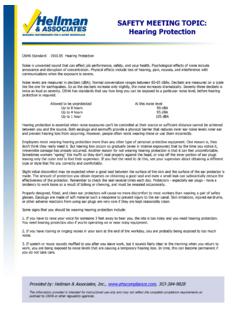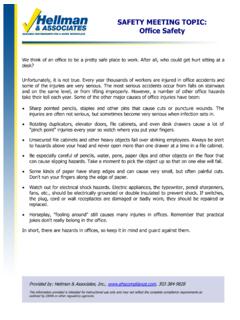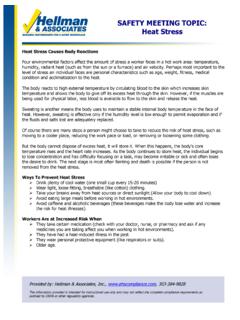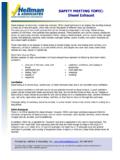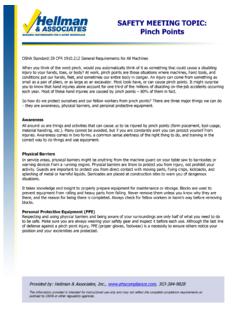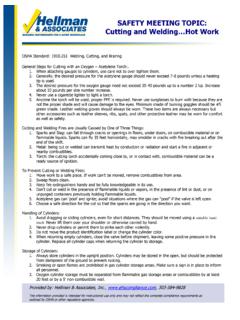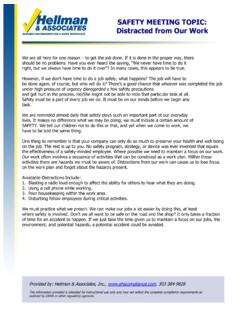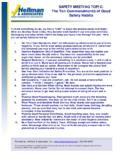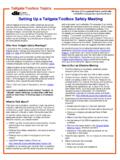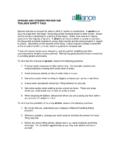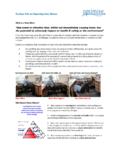Transcription of SAFETY MEETING TOPIC: Ladder Safety
1 SAFETY MEETING TOPIC: Ladder SAFETY OSHA Standard: Ladders Ladders are one of the top means of access and egress on any site. The following are some tips that may make your interaction with ladders less hazardous: Before using a Ladder , inspect it for faults, such as broken rungs or rails. If it is an extension Ladder , inspect the pulleys, ropes and locks for excessive wear. Also, check the footings and pads to make sure they still provide a non-skid surface. If any defect is found, the Ladder should be tagged unsafe and taken out of service. If it cannot be fixed, make sure it is disposed of properly. Ladders should only be used on stable and level surfaces unless secured to prevent accidental displacement. Do not use bricks or other material to raise the height of the Ladder .
2 If it is not tall enough, you are using the wrong Ladder . The Ladder should reach a minimum of three feet above the upper landing surface to which the Ladder is used to gain access. When using extension ladders, abide by the 1:4 rule. For every 4 feet in height, the Ladder should be located one foot away from the base of the structure. When using a stepladder, make sure the folding cross braces are locked in the proper position before you step onto it. Always face the Ladder when ascending or descending, and have both hands free to grasp it securely. If you need tools, they should be carried in a tool belt or pulled up/or lowered down with a rope once you have reached your destination. Remember the "3-Point Rule": At least two hands and one foot, or two feet and one hand, should be in contact with the Ladder at all times.
3 Keep your body between the side rails of the Ladder . This reduces the chance of tipping it over and/or falling off. Do not climb higher than the third rung from the top on straight or extension ladders or the second tread from the top on stepladders. If using ladders where the employee or the Ladder could contact exposed energized electrical equipment, they must have nonconductive siderails such as wood or fiberglass. By following the above rules, you greatly reduce your chances of being injured while working on ladders. Remember, the life you save will be your own! Provided by: Hellman & Associates, Inc., , 303-384-9828 The information provided is intended for instructional use only and may not reflect the complete compliance requirements as outlined by OSHA or other regulatory agencies.
4
